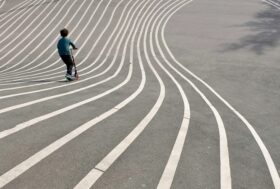Curriculum design in discrete subjects: What are we missing?

CHARLIE CUTLER, HEAD OF PRIMARY CURRICULUM DEVELOPMENT, UNITED LEARNING, UK
TANYA HUGHES, REGIONAL DIRECTOR, UNITED LEARNING, UK
The importance of designing and organising a curriculum around discrete subjects is well established. Among others, Christine Counsell has argued that each subject’s substantive and disciplinary knowledge needs to be placed at the heart of the curriculum (Counsell, 2018), and the research behind Ofsted’s Education Inspection Framework (2021a) echoes this message. Instead of planning arbitrary topics like ‘chocolate’ or ‘mysteries’, subject leads in primary schools now plan history, geography or music curricula discretely.
But do we lose something with this siloed approach to curriculum design? This article examines how looking across subjects to make meaningful connections can help all students to know and remember more; it also sets out how schools can embed this in their curriculum design. While the examples used relate predominantly to primary settings, the points raised are also relevant for secondary schools.
Essential interdisciplinary links
Mary Myatt (2018) defines interdisciplinary links as those connections that can be made between subjects that – crucially – keep the integrity of the subject-specific knowledge intact. They are not ‘cross-curricular’ links where, in a topic like ‘water’, students may be understandably unclear as to whether they are learning science, geography or English, or how this knowledge fits within their existing understanding.
It can be argued that making some interdisciplinary links is essential: how can we expect students to understand BCE and CE in history before they have mastered negative numbers in mathematics? How can we ask students to examine the adaptations of camels or polar bears in science before they have considered hot and cold deserts in geography?
OfstedThe Office for Standards in Education, Children’s Services... More too are clear about these points, referencing the need to ‘make relevant connections between knowledge from other subject disciplines’ (2021b) and specifically highlighting the importance of ‘students’ mathematical knowledge being developed and used, where appropriate, across the curriculum’ (2021c).
Teachers and subject leads need to work across subject silos, at least to the extent that they can recognise dependencies between subjects and can design the curriculum accordingly.
Optional but desirable
But this minimal approach is not enough if we truly want a curriculum that is coherent, and which helps students to know and remember more. Clare Sealy (2017) has discussed the ‘three-dimensional curriculum’ and how, in addition to the ‘vertical’ concepts that are built within a subject, we should also consider how ‘horizontal’ and ‘diagonal’ concepts should be built across subjects and across years. There are additional benefits that can be realised when subject silos are broken through, and a curriculum is designed to be coherent across all subjects and year groups in this three-dimensional way.
Knowledge can be mutually reinforcing
While some knowledge gained in history may not be prerequisite or essential for students to access a biology unit, it can be mutually reinforcing; it can make new content easier to learn while reinforcing existing knowledge. For example, teachers may introduce students to primary and secondary ageing in biology without any reference to any prior learning, but this knowledge will be ‘stickier’ if it is taught and explicitly placed in a schema that already contains ‘primary’ and ‘secondary’ in the contexts of, for example, historical sources, geographical effects or colour theory.
While there are certainly fewer opportunities for the mutual reinforcement of disciplinary knowledge across subjects (it is, by definition, the understanding of how each subject produces and refines its canon of knowledge), it should not be discounted entirely. For example, the idea that historians construct accounts of the past by interpreting available evidence and building on or challenging the work of others is very similar to how scientific theories emerge and are refined. The two ideas, when taken together, can be mutually reinforcing.
Students have more opportunities for interleaved and spaced retrieval practice
We know that retrieval – bringing relevant knowledge to mind – is the most powerful part of the learning process (Agarwal and Bain, 2019). Quizzes, ‘flashback Fridays’ or ‘brain dumps’ have all been used effectively in schools to help students remember more, and retrieval is increasingly being incorporated within the design of each subject curriculum.
However, opportunities for relevant retrieval are more frequent when you start to look beyond the confines of one subject: students can meaningfully retrieve the scientific definition of trace fossils when learning about the remains of human activities in history; or they can recall specific adaptations of flora and fauna in various geographical biomes when grouping adaptations as behavioural, structural or physiological in biology.
When retrieving knowledge across subjects and across year groups, it becomes spaced and therefore more powerful. When retrieving it across subjects there are also more opportunities for interleavingAn approach to learning where, rather than focusing on one p... More, where students are required to more meaningfully choose which knowledge or part of their understanding that they need to deploy (Agarwal and Bain, 2019).
Accidental repeats can be replaced with deliberate and meaningful learning
The knowledge that is taught in school subjects (the ‘field of reproduction’) does not map exactly to the disciplines in which that knowledge is gained (the ‘field of production’). For example, the school subject of geography includes the academic disciplines of geology, meteorology, economics and others. RE in school includes theology, philosophy, ethics and history. The ‘recontextualisation’ of knowledge into school subjects is therefore usually imperfect, and academic disciplines can spill across into multiple subjects (Ashbee, 2021). For example, the National Curriculum requires students to learn about the water cycle in Key Stage 2 in both science and geography, and students may learn about the founding of Islam in both history and RE.
When subject leads look beyond the silos of each subject’s curriculum design, consideration can be given to when pieces of knowledge are taught for the first time – regardless of the ‘recontextualised’ subject – and when they can be meaningfully reviewed and built upon. It avoids accidental repeats, provides further opportunities for retrieval and gives the curriculum across multiple subjects the opportunity to be more ambitious.
Interdisciplinary links reflect the pedagogy and approaches of each discipline
While not strictly about curriculum design, the breaking down of subject silos has the additional benefit of ensuring that whenever knowledge from one subject is meaningfully reviewed in another, it is done so in a way that is faithful to each subject discipline. For example, when students are taught CE and BCE in history, teachers should explicitly review and draw upon similar examples, language and small steps that might be used for negative numbers in mathematics. Similarly, when students present information in a line graph or a Venn diagram in any subject, the same success criteria and mathematical approach should be modelled.
Making this work in school
While the benefits of designing a ‘three-dimensional curriculum’ are clear, the approach itself is difficult to implement. It is one that requires deep subject knowledge within subjects, as well as the time and expertise to make meaningful connections between the subjects. What follows are the practical steps that we at United Learning have undertaken to begin to develop such a curriculum.
1. Be absolutely clear about what is taught in each subject
This is an obvious preliminary step, but it is one that cannot be underestimated. Each subject lead should know exactly what knowledge is taught in each half-term, year and key stage, and this should be codified in a way that others can understand.
2. Make time for subject experts to share their curriculum with others and discuss where connections could be made
Once subject leads are clear about what they want to teach in each subject, time needs to be made for discussions between subject leads. These should cover, in the first instance, the detail of what is included in each subject’s curriculum and an open conversation about what connections should or could be made.
Senior leaders need to allow time for this, and may encourage subject leads to meet in groups of subjects where interdisciplinary links are most common (e.g. mathematics, science and geography or DT, computing and mathematics). Curriculum leads, with oversight of the whole school’s curriculum, can also play an invaluable role in bringing together subjects and highlighting dependencies and potential interdisciplinary links.
3. Design the curriculum so that meaningful and feasible interdisciplinary links are built in
Just because links can be made does not mean that they should. Connections that are not meaningful should not be included; they can become an unhelpful distraction and jeopardise the core knowledge or ideas to be taught. Similarly, knowledge should always be taught first in its own subject before we attempt to revisit or apply it elsewhere.
Other links may be beneficial but just not feasible to make within the existing curriculum sequences. Interdisciplinary links should not be made at the cost of coherence within each subject.
At this stage, subject leads and teachers should have discussions to ensure that knowledge is presented and revisited in a way that is consistent, accurate and reinforcing.
4. Codify this curriculum for all teachers
There are many ways of codifying a curriculum; Figure 1 shows the approach that we have used. It has become a very large document, but sets out all the substantive and disciplinary knowledge that we intend to teach from EYFS to Key Stage 2 across all subjects, and shows when this content will be first taught and then built upon or reviewed in other places in the curriculum.
From this document, we can firstly see clearly what new knowledge will be taught and what prior knowledge will be reviewed in each curriculum unit. It also allows us to see spaced retrieval within the curriculum, and helps us to plan to purposefully retrieve knowledge that is not regularly reviewed elsewhere.

5. Regularly review and iterate
No curriculum is ever complete; developments in each subject discipline need to be considered, and there are always ways in which the curriculum sequence can be improved. Continue to make time for subject leads to discuss interdisciplinary links and how these may change in the wake of subject developments or feedback from teachers and pupils.
Conclusion
The shift towards teaching science, geography and music discretely – rather than in topics like ‘water’ or ‘chocolate’ – is one that should be welcomed. But in doing so, we should not forget the value that a ‘three-dimensional curriculum’ can bring, and we should invest the time in developing one.
- Agarwal PK and Bain PM (2019) Powerful Teaching: Unleash the Science of Learning. San Francisco: Jossey-Bass.
- Ashbee R (2021) Curriculum: Theory, Culture and the Subject Specialisms. Abingdon, Oxon: Routledge.
- Counsell C (2018) Taking curriculum seriously. Impact 4: 6–9.
- Myatt M (2018) Building curriculum coherence. Impact 4: 34–36.
- Ofsted (2021a) Education inspection framework. Available at: www.gov.uk/government/publications/education-inspection-framework/education-inspection-framework (accessed 18 August 2021).
- Ofsted (2021b) Research review series: Science. Available at: www.gov.uk/government/publications/research-review-series-science/research-review-series-science (accessed 18 August 2021).
- Ofsted (2021c) School inspection handbook for September 2021. Available at: www.gov.uk/government/publications/school-inspection-handbook-eif/schools-inspection-handbook-for-september-2021 (accessed 18 August 2021).
- Sealy C (2017) The 3D curriculum that promotes remembering. In: Primarytimerydotcom. Available at: https://primarytimery.com/2017/10/28/the-3d-curriculum-that-promotes-remembering (accessed 18 August 2021).










